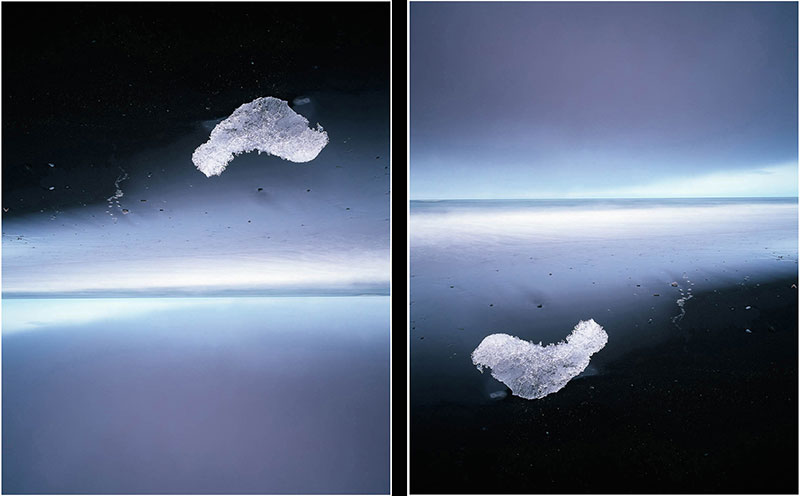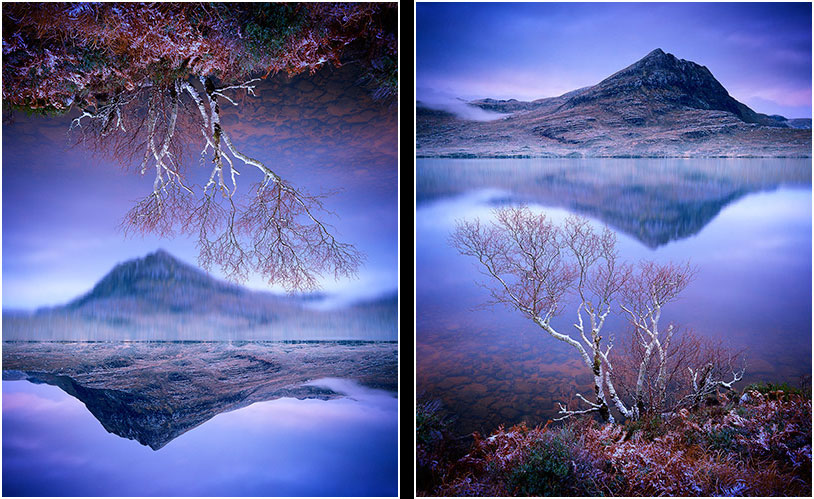I’m in Turkey this week with my view camera - I own an Ebony SW23 medium-format film view camera. Whilst looking through my older entries in my blog (which I recommend you doing sometime, as there’s now quite a lot of information here as I’ve been writing it for over 10 years), I found this article. Which I felt I would like to re-post today.
—-
Originally posted on May 5th, 2014
A few months ago, I re-entered the world of the view camera. It was a decision based on a few things.
Firstly, I'd been finding that I needed perspective control over some of the landscapes I've started to shoot over the past year. Buildings, and tall features in nature were causing me issues where I felt that the subjects began to lean backwards or converge together. Using a camera (or lens) with perspective control would alleviate that issue.
Upside down, and right way up
However, one of the challenges of using a view camera is that of composing upside down. I've found that rather than it being a hindrance, it has been beneficial in teaching me to notice things in the frame that I wouldn't ordinarily see at the point of capture.
One aspect of the human visual system, is that once we learn what an object looks like, we tend to keep it for reference point later on. This happens with everything that we see in our daily encounters. For example, when learning to read, once we know what some particular words look like, we no longer actually 'read' them (in my mind, this is tantamount to not seeing them). We simply scan past them. Take this sentence for example. Try counting the number of 'F's in it (please count it once):
FINISHED FILES ARE THE RESULT OF YEARS OF SCIENTIFIC STUDY COMBINED WITH THE EXPERIENCE OF YEARS.
How many 'F's did you count? Most folks tend to count three. There are actually six. The reason why you probably got somewhere around three, is because your mind has learned to 'scan' words such as 'OF' - you don't actually read them. Instead, your brain passes over them because it learned many moons ago that it's really laborious to read words like this all the time.
Another example to consider is that of a room you know so well. Once the ornaments and furniture have been in place for a while, you tend to pass over them with your eye. But if someone comes in and re-arranges something, or changes something, you'll more than likely pick up on the change when you enter the room. Rather than having to 'see' everything, as if for the first time, each time you enter the room (which would be really exhausting on your visual system), your eye tends to pass over familiar objects.
Now, photography is really the art of being able to enjoy the subtleties and nuances of familiar objects. Like taking a still-life art class, where we are asked to look at a vase of flowers and draw it, the act of making pictures is really about noticing the details of things we take for granted.
In terms of photographic composition, when we see a objects we are familiar with, such as trees and mountains, we tend to pass over them quickly. This leads to issues where we don't notice compositional errors in our pictures until we are home staring at them on our screens.
But what if the image is turned upside down? Do you still pass over the tree in the frame below, or is your mind thrown into a state of trying to work out what the object is?
Upside Down & right way up (again)
Turning an image upside down breaks our ability to pass over items within the frame easily. In an attempt to understand what we are seeing, we pay more attention to the shapes and tones of the items within the frame. Looking at the two examples on this page, I would like to suggest that when you see the upside down image, this is exactly what is happening in your brain. But when you look at the image the right-way-up, you're now back to scanning familiar objects such as trees, mountains, sky, etc.
So turning an image upside down allows us to abstract the composition down into form and tone.
I guess you may be asking - well how can I use this, if I don't have a view camera like Bruces? I'll let you into a secret - I don't just use this feature with my view-camera - I also use it when I'm editing images at home in Photoshop. It's hugely beneficial to rotate my images 180 degrees - because it allows me to notice flaws in the composition, or to see things that I wouldn't notice otherwise. The interesting thing about this is that once you correct the things you're not consciously aware of, the compositions tend to become much more relaxed and easier for your brain to take in.
So if your camera has the facility to turn your preview image upside down - it might be worth using it from time to time. Set up your composition and then flip the image 180 degrees to look at the frame and see if anything you didn't notice before pops out at you. Additionally, it's worth doing the same exercise with an image once back home and behind your computer screen.
Turning your images 180 degrees is a bit like having a workout for your visual-muscle. Perhaps it's something you might like to consider whilst out in the field, or at the very least, once back home and editing your work.


